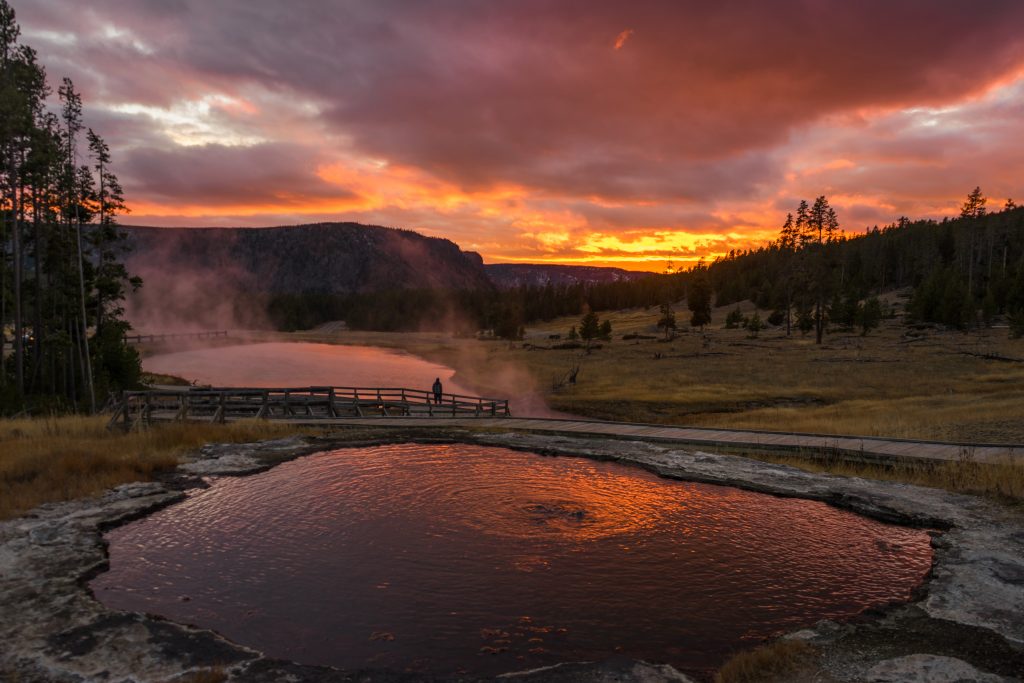Hunting and conservation have a long history together. In today’s world, where natural predators aren’t as common as they used to be, hunting is sometimes necessary for population control of animals such as deer or beaver. These animals can quickly alter an ecosystem if their populations aren’t kept in check by hunting. On the flipside of the coin, it is hunting that cause populations of animals such as wolves, grizzly bears, and bison to die off in the first place. Although hunting is strictly regulated now, that wasn’t always the case and animals have even been hunted to extinction. Basically, the relationship and history between hunting and conservation is a complicated one. One that is still being worked on today. This month, that has become even more evident with new hunting regulations being approved in Wyoming and proposed in Alaska.
Last year, the Grizzly Bear was delisted as an endangered species. This delisting in and of itself was controversial because people feared it might open these bears up to hunting. This past week, those fears were realized when the Wyoming Fish and Game Commission voted unanimously to allow the first grizzly bear hunt in 43 years to take place this fall. During this hunt 22 bears would be allowed to be harvested. Much of the support for this hunt comes from outfitters and ranchers, many of whom have to live with the bear day-to-day and deal with livestock depredation. In turn, the hunt has outraged many who partially credit the presence of the bears to the many tourist dollars that Grand Teton and Yellowstone National Parks bring in each year. It is undeniable that bear viewing is a huge industry in Wyoming. Without the bears they claim, local economies could suffer. It is important to note that hunting grizzlies within the national park borders is still off limits, but if the bears –including famous ones such as 399, 610, Raspberry, and Blondie to name a few- leave the park boundaries, they would be vulnerable to hunters. This is a story to watch, as it is likely that one of the many lawsuits filed against this hunt could postpone or cancel it.
Similarly, up north in Alaska, the National Park Service caused controversy this month when they proposed the state of Alaska should decide how to manage hunting on federal lands in their state. Much of Alaska’s lands are federally owned and have different regulations than other state-owned lands. Officials say “The purpose of this proposed rule is to align sport hunting regulations in national preserves in Alaska with State of Alaska regulations and to enhance consistency with harvest regulations on surrounding non-federal lands and waters. The proposed rule would apply the State of Alaska’s hunting regulations to national preserve lands, with limited exceptions.” This is causing controversy because some of hunting practices that the federal government forbids, are acceptable in some –but not all- parts of Alaska. These include practices like killing bear cubs alongside their mothers, shooting caribou while they swim, hunting wolves, including pups, while in their dens and targeting other animals from airplanes and snowmobiles. In addition, animals could also be baited with sweets and killed or poisoned. The NPS has opened this proposal up for a public comment period which will close on July 23rd, if you have an opinion about this one way or the other now is the time to speak up.
These two actions this month have once again brought hunting to the forefront of the Public Lands and Conservation discussion. It’s a continuing discussion, one that is not likely to end soon. As with all this news, it is important for us who work in public lands to understand both sides so that we are able to partake in the conversation.

